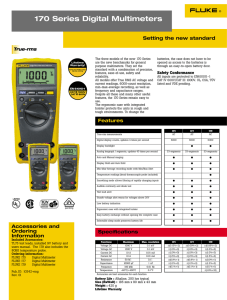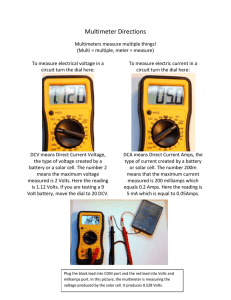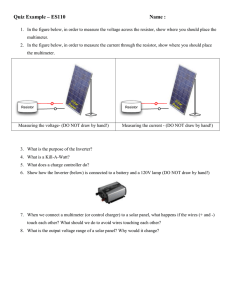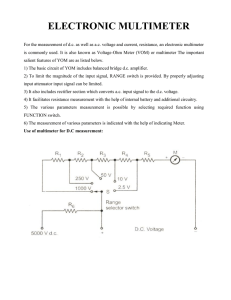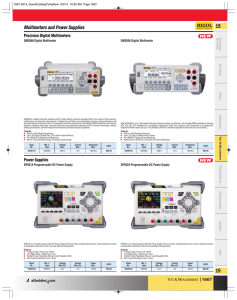Lab 3.1.1 Safe Handling and Use of a Multimeter – Instructor Version
advertisement
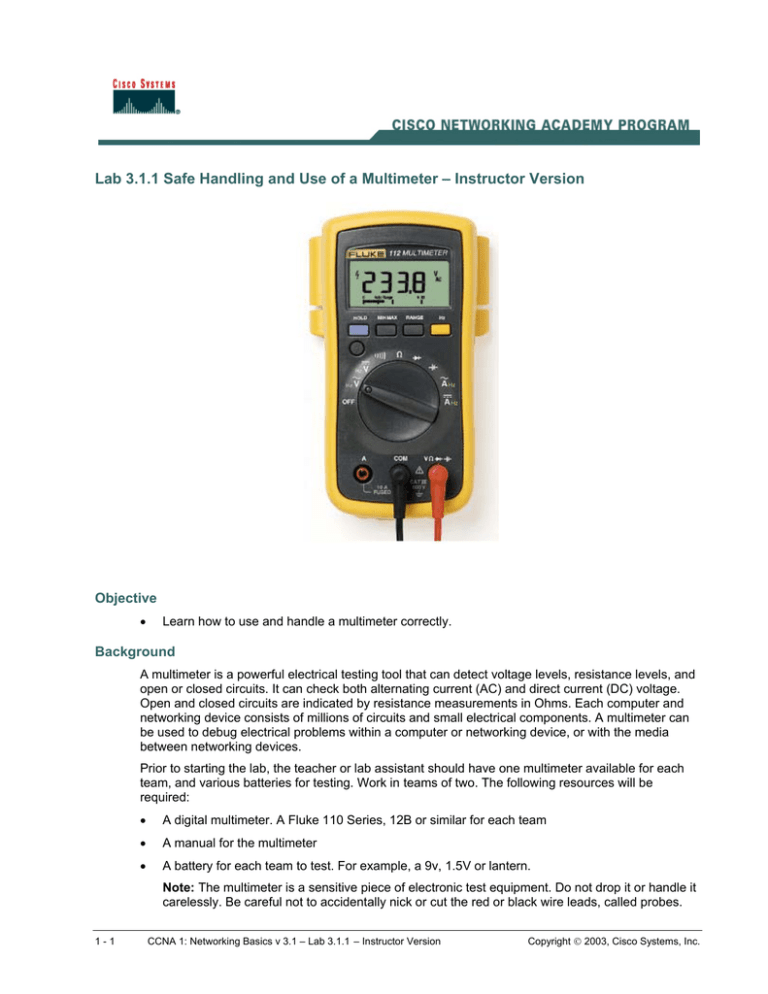
Lab 3.1.1 Safe Handling and Use of a Multimeter – Instructor Version Objective • Learn how to use and handle a multimeter correctly. Background A multimeter is a powerful electrical testing tool that can detect voltage levels, resistance levels, and open or closed circuits. It can check both alternating current (AC) and direct current (DC) voltage. Open and closed circuits are indicated by resistance measurements in Ohms. Each computer and networking device consists of millions of circuits and small electrical components. A multimeter can be used to debug electrical problems within a computer or networking device, or with the media between networking devices. Prior to starting the lab, the teacher or lab assistant should have one multimeter available for each team, and various batteries for testing. Work in teams of two. The following resources will be required: • A digital multimeter. A Fluke 110 Series, 12B or similar for each team • A manual for the multimeter • A battery for each team to test. For example, a 9v, 1.5V or lantern. Note: The multimeter is a sensitive piece of electronic test equipment. Do not drop it or handle it carelessly. Be careful not to accidentally nick or cut the red or black wire leads, called probes. 1-1 CCNA 1: Networking Basics v 3.1 – Lab 3.1.1 – Instructor Version Copyright 2003, Cisco Systems, Inc. Because it is possible to check high voltages, extra care should be taken to avoid electrical shock. Step 1 Insert the red and black leads into the proper jacks on the meter. a. The black probe should go in the COM jack and the red probe should go in the + (plus) jack. Step 2 Turn on the multimeter. Click or turn to the on button. a. What is the model of multimeter? Answers will vary. Typical answers will be Fluke 112, Fluke 12B, or Sperry DM-350A. b. What action must be taken to turn the meter on? Turn the dial from the OFF position to active switch position. Step 3 Switch or turn to different measurements. For example, voltage, and ohms. a. How many different switch positions does the multimeter have? Answers will vary. The Fluke 12B has only 3 switch positions (including OFF). The Sperry DM350A has 18 switch positions (including OFF). If your Academy uses different multimeters, count the number of switch positions on those multimeters. b. What are they? Answers will vary. The Fluke 12B has OFF, V, and Ω. The Sperry DM-350A has OFF, 600 ACV, 200 ACV, 200 MΩ, 2 MΩ, 200 KΩ, 20 KΩ, 2 KΩ, 200 Ω, a diode setting, 2 DCmA, 20 DCmA , 200 DCmA , 200 DCmV, 2 DCV, 20 DCV, 200 DCV, and 600 DCV. If your Academy uses different multimeters, list the switch positions on those multimeters. Step 4 Switch or turn the multimeter to the voltage measurement. a. What is the symbol for this? V or VDC. Many meters will also have AC Volt positions, but those positions should not be used for this lab. Step 5 Put the tip of the red, positive lead on the positive side of a battery. Put the tip of the black, negative, lead on the other end of a battery. a. Is any number showing up on the multimeter? Yes (it should) If not, make sure to switch to the correct type of measurement. For example Vol, voltage, or V. If the voltage is negative, reverse the leads. Reflection: 1. Name one thing that should not be done to a multimeter. Acceptable answers include drop it, handle it carelessly, nick or cut the leads, or test voltage with improper voltage range settings. 2. Name one important function of a multimeter. Acceptable answers include measure AC or DC voltage levels, measure resistance levels, measure AC or DC current levels, and detect open or closed circuits. 3. If a voltage is negative when measuring a battery, what is wrong? The red lead is connected to the negative side of the battery rather than the positive side. Reverse the leads to correct this. 2-2 CCNA 1: Networking Basics v 3.1 – Lab 3.1.1 – Instructor Version Copyright 2003, Cisco Systems, Inc.

